ETH ZuricH - ETH - Finanzen und Controlling - ETH Zürich
ETH ZuricH - ETH - Finanzen und Controlling - ETH Zürich
ETH ZuricH - ETH - Finanzen und Controlling - ETH Zürich
Create successful ePaper yourself
Turn your PDF publications into a flip-book with our unique Google optimized e-Paper software.
16 Core duties – Research<br />
17<br />
Preventing and permanently eradicating gout<br />
Diabetes diagnosis with no finger-pricking<br />
About one per cent of the population of industrialised countries<br />
suffers from the metabolic disorder gout. In this illness,<br />
uric acid forms crystals when it occurs in too high a concentration<br />
in the blood. Painful deposits accumulate in the joints,<br />
or crystals form in the kidneys, which can cause damage. The<br />
excessively high uric acid content in the blood is caused partly<br />
by genetic predisposition or an unbalanced diet.<br />
Lost during evolution<br />
People suffer from gout because during the process of evolution<br />
– unlike other mammals – they lost an important<br />
enzyme which controls uric acid levels naturally. Now researchers<br />
at the Department of Biosystems Science and Engineering<br />
have developed a method giving hope to anyone<br />
who may be at risk of suffering from gout or already does.<br />
While many medical problems can be solved by drugs<br />
being introduced into the body from outside, the researchers<br />
led by <strong>ETH</strong> Professor Martin Fussenegger are directly correcting<br />
the faulty metabolic pathway which leads to gout<br />
and so are helping the body to treat itself. The scientists<br />
have developed a synthetic network of specially prepared<br />
genes which are infiltrated into the cells. Once implanted in<br />
the body, this gene network called UREX regulates the level<br />
of uric acid in the blood and thus assumes the role of the<br />
lost enzyme. If UREX detects that the uric acid level is too<br />
high, this information is relayed to a switching circuit which<br />
controls another component. This then dispenses the correct<br />
dose of the enzyme to regulate the uric acid.<br />
The complete gene network is incorporated in a single<br />
cell of which two million are enclosed in perforated 0.2 millimetre<br />
capsules made of seaweed gelatine. When the encapsulated<br />
cells are implanted in the body, they automatically<br />
Using nano research to combat iron deficiency<br />
About 1.5 billion people worldwide suffer from the consequences<br />
of iron deficiency. Fatigue, anaemia and developmental<br />
problems are just some of the symptoms. Women<br />
are particularly frequently affected. One solution is to add<br />
iron to food. Often elementary iron is used but this is not<br />
water-soluble and is not easily digested in the intestinal<br />
tract. Iron sulphate, on the other hand, is water-soluble and<br />
is easily processed by the body, but it changes the colour<br />
and taste of the food.<br />
Now researchers led by Florentine Hilty and Michael<br />
Zimmermann at the Institute of Food, Nutrition and Health<br />
have fo<strong>und</strong> another promising solution: when reduced to<br />
nano size and mixed with the right metals, elementary iron<br />
The metabolic illness gout leads to painful deposits in the joints.<br />
attach themselves to the circulatory system and release<br />
their therapeutic effect. Thanks to this biological gene network,<br />
the cause of gout can be permanently eliminated to<br />
prevent the illness. UREX has already been tested successfully<br />
on mice and the patent has been applied for.<br />
Y www.ethz.ch/human_therapy<br />
can be easily absorbed by the body. Most effective is a mixture<br />
of iron zinc oxide and magnesium. Tests have shown<br />
that the body can use the iron much better in this form. The<br />
combustion technique deployed to produce the nano structures<br />
has been known about for some time. It was used<br />
on food for the first time three years ago by <strong>ETH</strong> scientists.<br />
However, more tests are required before nano-structured<br />
food of this kind can go on sale.<br />
Ywww.ilw.agrl.ethz.ch<br />
Researchers in the group led by Sotiris Pratsinis, Professor<br />
of Particle Technology at the Institute of Process Engineering,<br />
have developed a sensor that can instantly measure<br />
acetone in the breath. That is an easy way to diagnose Type<br />
1 diabetes or the symptoms of ketoacidosis, a complication<br />
of diabetes where there is a total lack of insulin. This is because<br />
in the breath exhaled by Type 1 diabetes patients the<br />
acetone concentration, at about 1800 ppb (parts per billion),<br />
is twice as high as it is in healthy people. During ketoacidosis,<br />
the proportion is even higher. The sensor can measure<br />
an acetone concentration of as little as 20 ppb and works<br />
very accurately even in very high humidity, such as occurs<br />
in exhaled breath.<br />
To manufacture the sensor, the scientists coated a carrier<br />
which had gold electrodes with a semiconductor film<br />
made of tungsten oxide nanoparticles mixed with silicon.<br />
The mixture was produced in a flame at a temperature of<br />
over 2200° C. The nanoparticles rose up and were collected<br />
on the carrier substrate, which was then cooled with water.<br />
Through this rapid heating and cooling, a vitreous layer<br />
formed on the electrodes that is sensitive to acetone.<br />
Non-invasive methods of diagnosing illnesses are becoming<br />
more and more important. Analysis of people’s<br />
breath is key to this, as it is fast, cheap and easy to perform.<br />
Professor Sotiris Pratsinis hopes in future to be able to use<br />
similar sensors to test the breath for other illnesses.<br />
Y www.ptl.ethz.ch<br />
Epigenetically inherited ailments<br />
Brain researchers in the group led by Isabelle Mansuy, a professor<br />
at both <strong>ETH</strong> Zurich and the University of Zurich, have<br />
proved in mice that negative environmental influences at<br />
an early stage in life may not only have a negative effect<br />
on the behaviour of the individual in question throughout<br />
their life, but that the individual can pass on their changed<br />
behaviour to their descendants – even down to the third<br />
generation.<br />
Such negative environmental influences include, for example,<br />
chronic severe stress or traumatic experiences. Young<br />
animals which are unexpectedly separated from their mother<br />
and are put <strong>und</strong>er severe stress during the period of separation<br />
can show behaviour types later in life which could be<br />
interpreted as depression. Furthermore, the animals cannot<br />
control their impulses and are unable to deal appropriately<br />
with new or difficult situations.<br />
Mansuy’s research team was able to show that these behavioural<br />
changes are not due to mutations but to changes<br />
An innovative sensor can detect even small concentrations of<br />
acetone in exhaled breath.<br />
in what is called the methylation of certain genes in the<br />
brain and in the sperm. In this process, the small molecule<br />
methyl is, in certain genes, attached to or removed from one<br />
of the four basic components of DNA. This change to the<br />
methylation controls the activity of the affected genes and<br />
thus has an impact on important bodily functions.<br />
In mice, scientists have identified a number of genes<br />
which are affected by methylation due to earlier stressful<br />
experiences. However, not all these genes are altered to<br />
the same extent. It depends where and how many methyl<br />
groups are altered.<br />
It has long been believed that such behavioural information<br />
could be passed on epigenetically, but Mansuy’s working<br />
group is the first to succeed in demonstrating this at molecular<br />
level in several generations. Since the symptoms displayed<br />
by the disturbed mice are also very pronounced in borderline,<br />
depressive or schizophrenic patients, the results from the trials<br />
with mice could perhaps be transferable to humans.


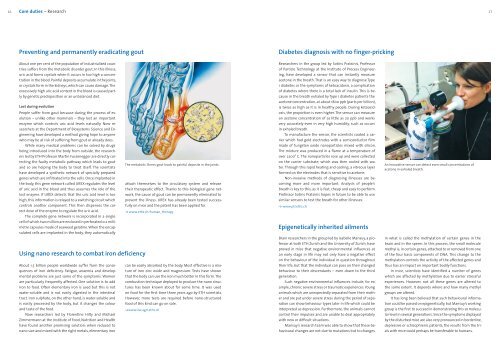
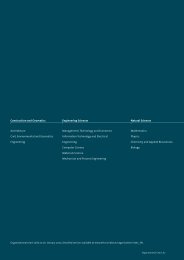




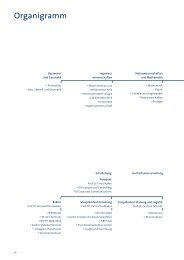
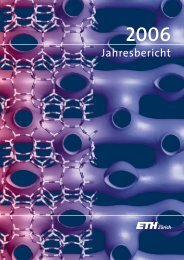
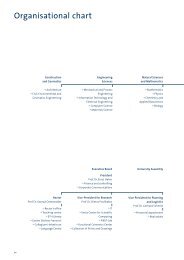





![DFC Newsletter Ausgabe 2006/09 September [Deutsch] (PDF, 103 kB)](https://img.yumpu.com/38538463/1/184x260/dfc-newsletter-ausgabe-2006-09-september-deutsch-pdf-103-kb.jpg?quality=85)